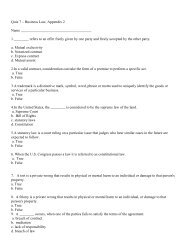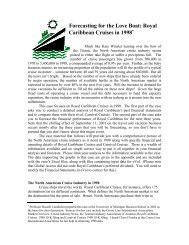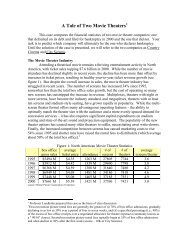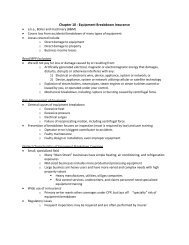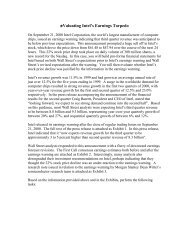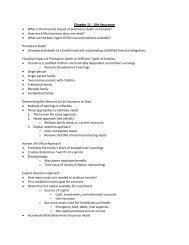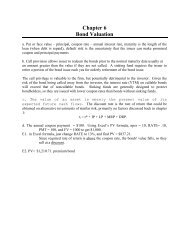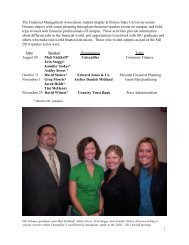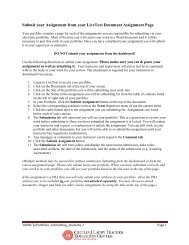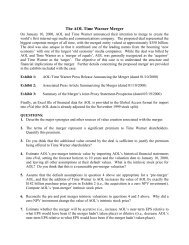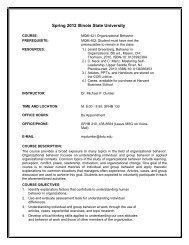Evaluating a Firm's External Environment - Illinois State University
Evaluating a Firm's External Environment - Illinois State University
Evaluating a Firm's External Environment - Illinois State University
Create successful ePaper yourself
Turn your PDF publications into a flip-book with our unique Google optimized e-Paper software.
M02_BARN4586_03_SE_C02.qxd 7/1/09 7:34 AM Page 33<br />
Chapter 2: <strong>Evaluating</strong> a Firm’s <strong>External</strong> <strong>Environment</strong> 33<br />
general nature of the relationship between government and business. These laws<br />
and the relationship between business and government can vary significantly<br />
around the world. For example, in Japan, business and the government are generally<br />
seen as having a consistently close and cooperative relationship. Indeed, some<br />
have observed that one reason that the Japanese economy has been growing so<br />
slowly over the last decade has been the government’s reluctance to impose economic<br />
restructuring that would hurt the performance of some Japanese firms—<br />
especially the largest Japanese banks. In the United <strong>State</strong>s, however, the quality of<br />
the relationship between business and the government tends to vary over time. In<br />
some administrations, rigorous antitrust regulation and tough environmental<br />
standards—both seen as inconsistent with the interests of business—dominate.<br />
In other administrations, antitrust regulation is less rigorous and the imposition<br />
of environmental standards is delayed, suggesting a more business-friendly<br />
perspective.<br />
A final attribute of a firm’s general environment is specific international<br />
events. These include events such as civil wars, political coups, terrorism, wars<br />
between countries, famines, and country or regional economic recessions. All of<br />
these specific events can have an enormous impact on the ability of a firm’s strategies<br />
to generate competitive advantage.<br />
Of course, one of the most important of these specific events to have<br />
occurred over the past several decades was the terrorist attacks on New York City<br />
and Washington, D.C., on September 11, 2001. Beyond the tragic loss of life, these<br />
attacks had important business implications as well. For example, it took over five<br />
years for airline demand to return to pre–September 11 levels. Insurance companies<br />
had to pay out billions of dollars in unanticipated claims as a result of the<br />
attacks. Defense contractors saw demand for their products soar as the United<br />
<strong>State</strong>s and some of its allies began waging war in Afghanistan and then Iraq.<br />
A firm’s general environment defines the broad contextual background within<br />
which it operates. Understanding this general environment can help a firm identify<br />
some of the threats and opportunities it faces. However, this general environment<br />
often has an impact on a firm’s threats and opportunities through its impact on a<br />
firm’s more local environment. Thus, while analyzing a firm’s general environment<br />
is an important step in any application of the strategic management process, this<br />
general analysis must be accompanied by an analysis of a firm’s more local environment<br />
if the threats and opportunities facing a firm are to be fully understood. The<br />
next section discusses specific tools for analyzing a firm’s local environment and the<br />
theoretical perspectives from which these tools have been derived.<br />
The Structure-Conduct-Performance<br />
Model of Firm Performance<br />
In the 1930s, a group of economists began developing an approach for understanding<br />
the relationship among a firm’s environment, behavior, and performance.<br />
The original objective of this work was to describe conditions under<br />
which competition in an industry would not develop. Understanding when competition<br />
was not developing in an industry assisted government regulators<br />
in identifying industries where competition-enhancing regulations should be<br />
implemented. 11



